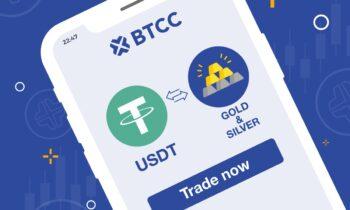
After breaking the key $20,000 level just over two weeks ago, Bitcoin’s ascent has been relentless. Closing the year with an incredible 305% increase, the world’s most popular cryptocurrency added an astonishing 50% in the last two weeks alone.
With the majority of financial markets closed over the Christmas and New Year period, Bitcoin and other cryptocurrencies became the focus of investors. On Saturday 3rd January, Bitcoin broke $30,000. By Sunday, Bitcoin surpassed $34,000 before pulling back on Monday to be 2.85% lower at the time of writing with one Bitcoin valued at $33,007 but dropping steadily as the morning progresses.
Even before the overnight pullback, obvious comparisons were being made to the last big bull run of December 2017. Then Bitcoin enjoyed a similar ascent, rising to an all-time high of $19,783.06. before crashing 45% in a matter of days and then halving again within the next six weeks.
However, the playing field is very different this time and here are 3 reasons why the latest Bitcoin bull run is very different to 2017.
Institutional Investors
There has been massive institutional investment into Bitcoin since 2017. Investors of every size have been lured by Bitcoin’s inflation-hedging qualities and its ability to provide fast and large returns.
When you compare Bitcoin’s return in 2020 – 305% to that of the S&P 500 Index – 16% and Gold – 25%, you can see why institutional investors such as Grayscale, Rothschild Investment Corporation, Addison Capital and Corriente Advisor have invested in Bitcoin.
On top of that, legendry hedge fund managers and investors such as Paul Tudor Jones, Mark Yusko and Mike Novogratz have all backed Bitcoin in the last year.
Institutional Adopters
2020 was the year that the payments industry and in particular PayPal gave credibility to Bitcoin. When in October, Paypal announced it would accept Bitcoin in its wallets, Bitcoin had a legitimacy like never before.
Other payment providers have embraced Bitcoin along with other retailers and service providers. Bitcoin is far more mainstream and more prevalent in the financial ecosystem than ever before.
Other big multinational company’s that have adopted bitcoin include KFC, Namecheap, HomeDepot and Starbucks.
COVID-19 Acceleration
If there is one thing 2020 will be remembered for it is the COVID-19 pandemic. Sweeping the globe, the coronavirus impacted most of our lives. Working from home and ordering food and grocery shopping online increased immensely over 2020, whilst bringing crypto more into play.
According to studies, Cohen 2017; Shiller 2019; Vigna and Casey 2015, bitcoin adoption has been driven by perceived failings of traditional financial systems. 2020 saw those perceived failings extend beyond financial institutions into Governments.
Bitcoin itself has almost been COVID-19 proof. It has withstood a pandemic and came out of it better than any other of the main asset classes. It has proven last year to be a better safe haven asset for investors than than the traditional safe haven asset of Gold.
COVID-19 with its uncertainty and slight breakdown of societal norms has been good for Bitcoin. With signs of the pandemic impact continuing well into 2021, the immediate future offers more price rises.
The Inevitable Pull Back?
At some point a pullback seems inevitable, today’s (Monday) losses continue to gather momentum, whilst investors now have the world’s financial markets open to them, taking some focus off Bitcoin.
A correction is inevitable, the speed of the rise will see some want to cash in whilst their returns are potentially life-changing. However, because of the three reasons listed above, it will be a correction and not a crash.



